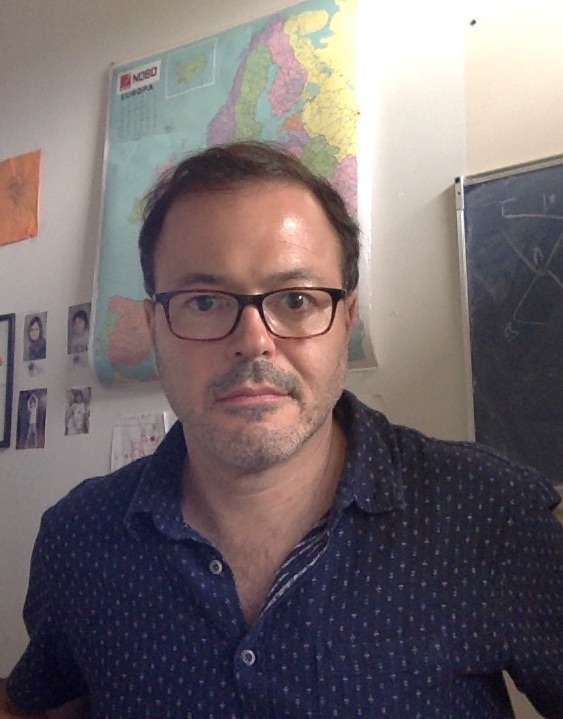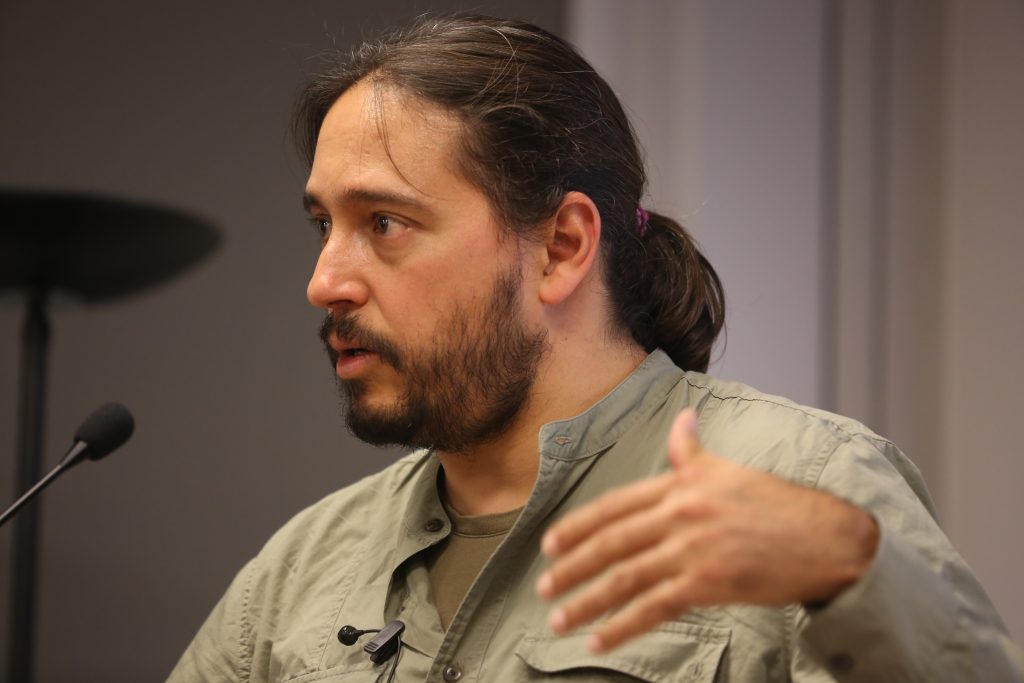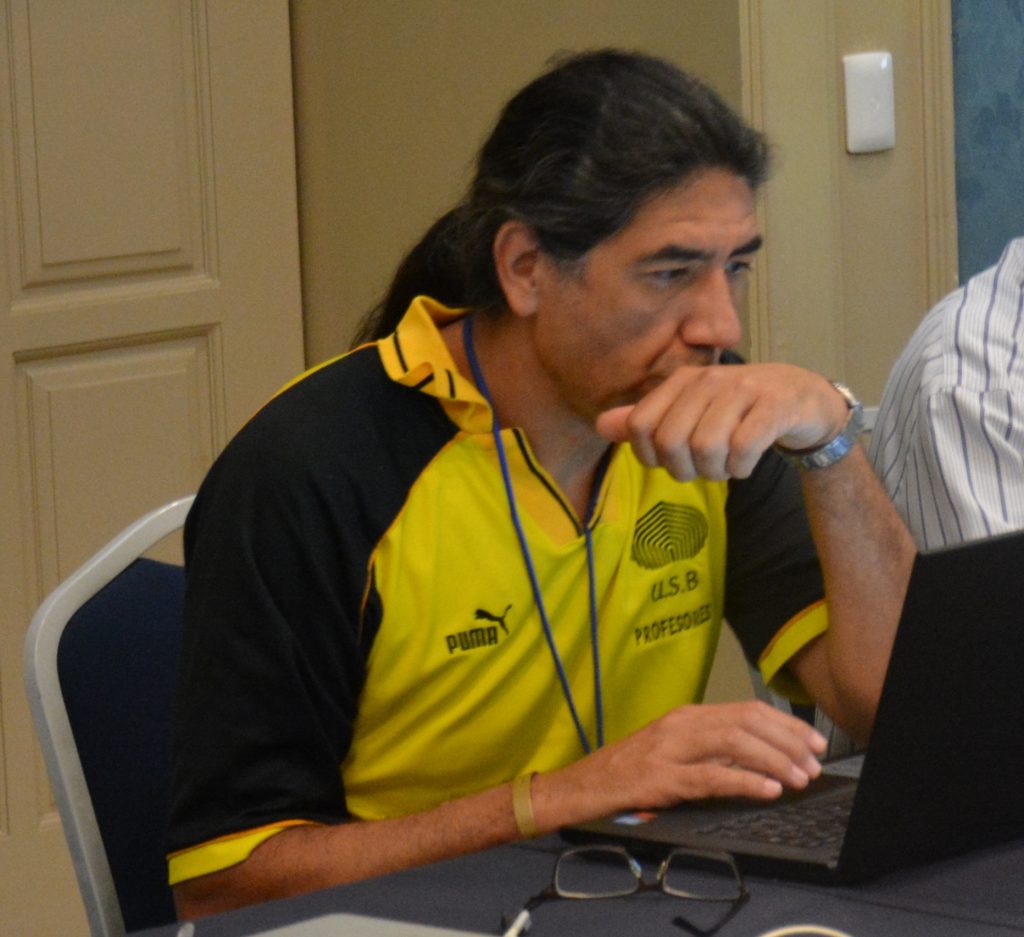Curso Teoría¶
El objetivo de este curso es comprender el formalismo básico de la Teoría Cuántica de Campos y sus aplicaciones en Física de Partículas y Sistemas Complejos.
Este curso es común a ambas especialidades: Sistemas Complejos y Altas Energías. Se divide en tres módulos
- Introducción a la Teoría de Campos
- Teoría de campos para la mecánica estadística (sólo para la especialización en sistemas complejos)
- Física de Partículas (sólo especialización HEP)
Introducción a la Teoría de Campos¶
Temáticas¶
Este módulo se compone de dos sub-módulos:
- Mini-módulo introductorio : Repaso de conceptos generales en relatividad especial y en mecánica cuántica
- Módulo principal : Introducción a la Teoría Cuántica de Campos
Las temáticas a cubrir en el Módulo principal serán las siguientes:
- Classical field theory
- Free scalar fields
- Interacting scalar fields
- Feynman calculus
- Renormalization
- Spontaneous symmetry breaking (TBC)
Acompañamiento Docente¶
Este módulo contará con la orientación de:
- Nicolás Bernal, Universidad Antonio Nariño.
- Anamaría Font, Universidad Central de Venezuela.
- José Ocariz, Université de Paris and researcher at Institut national de physique nucléaire et physique des particules IN2P3.
Acompañados de un conjunto de consultores: + Pierre Pujol, Université Paul Sabatier, Toulouse (UPS) + Jorge Stephany, Universidad Simón Bolívar, Caracas (USB) + Teófilo Vargas, Universidad Nacional Mayor de San Marcos, Lima (UNMSM)
Pre-requisites/Co-requisites¶
- Classical Mechanics
- Electromagnetism
- Quantum Mechanics
Remedial tutorials will be offered to students who are not Physics majors.
Schedule¶
Check academic calendar here
Class Structure¶
- Each session is a self-contained module
- A set of questions, videos, exercises and reading are proposed at the end of each session for individual work
Assessments¶
Students are expected to submit 8 written homeworks. This corresponds to 100% of the total grade.
Schedule and weekly learning goals¶
Week 1 (4 hours): Review of basic FT concepts¶
- Special Relativity. Griffiths 12.1-12.2. Lorentz invariance. Peskin 3.1.
- Classical field theory: Lagrangian, Hamiltonian, Noether theorem. Peskin 2.2.
Week 2 (4 hours): Free scalar fields¶
- Scalar fields as harmonic oscillators. Peskin 2.3
- Scalar fields in spacetime. Peskin 2.3
Week 3 (4 hours): Interacting scalar fields. λφ4 theory.¶
- Perturbation theory. Peskin 4.1, 4.2.
- Wick’s Theorem. Peskin 4.3.
Week 4 (4 hours): Feynman calculus¶
- Feynman diagrams. Peskin 4.4.
- Cross sections and S-matrix. Peskin 4.5.
Week 5 (4 hours): Scattering amplitudes from Feynman diagrams¶
- S-matrix elements from Feynman diagrams. Peskin 4.6.
- Tree-level examples. Ramond 4.4.
Week 6 (4 hours): Renormalization¶
- Renormalization in the loop expansion. Peskin 10.1, 10.2.
- The renormalization group. Peskin 12.1, 12.2, 12.3.
Appendix (TBD): Spontaneous symmetry breaking¶
- Spontaneous symmetry breaking of global symmetries. Goldstone Theorem. Peskin 11.1.
- Spontaneous symmetry breaking of local symmetries. Higgs mechanism. Peskin 20.1.
- Superconductivity. Weinberg.
Course material¶
Required reading¶
- D.J. Griffiths, Introduction to Electrodynamics.
- M.Peskin, D. Schroeder, An Introduction to Quantum Field Theory.
- P. Ramond, Field Theory: A Modern Primer.
- S. Weinberg, Superconductivity for Particular Theorists, Prog. Theor. Phys. Suppl. 86 (1986), 43. https://inspirehep.net/literature/18067
Acompañamiento docente¶
| Anamaría Font UCV Venezuela |
Pierre Pujol UT Francia |
José Ocariz UP Francia |
Teófilo Vargas Auccalla UNMSM Perú |
Jorge Stephany USB Venezuela |
|---|---|---|---|---|
 |
 |
 |
 |
 |
Field theory for statistical mechanics (Complex Systems specialisation only)¶
The aim of this course is to provide a general overview of the most used techniques of field theory in statistical physics and to understand the most relevant mechanism entering in the phenomena of phase transition, phases classification, and critical phenomena.
Topic overview¶
- Phase transitions in lattice systems
- From the Ising model in the lattice to a field theory in the continuum
- The gaussian model
- Broken symmetries and Goldstone modes
- The renormalization group and universality classes
- The XY model and topological defects
- Other examples in statistical mechanics
Acompañamiento Docente¶
Este módulo contará con la orientación de:
- Pierre Pujol, Université Paul Sabatier, Francia.
Schedule¶
Check academic calendar here
Class Structure¶
- Each session is a self-contained module
- A set of questions, videos, exercises and reading are proposed at the end of each session for individual work
Assessments¶
Students are expected to submit 8 written homeworks. This corresponds to 100% of the total grade.
Schedule and weekly learning goals¶
Week 1 and 2 (8 hours): Phase transitions in lattice systems¶
- Examples of the Ising and Heisenberg models, order parameter
- Mean Field solutions
- The idea of criticality and critical exponents
- Exact solution of the 1-D Ising model with the transfer matrix technique
Week 3 (4 hours): From the Ising model in the lattice to a field theory in the continuum¶
- Using the Hubbard-Stratonovich transformation
- The continuum limit and the λφ4 field theory
- Mean field solution of the the λφ4 field theory
Week 4 (4 hours): The gaussian model¶
- System defined on a lattice, computation of correlation functions
- Translation invariance and Fourier modes
- Continuum limit and expression of correlation functions
Week 5 (4 hours): Broken symmetries and Goldstone modes¶
- Field theory description of a spontaneously broken continuous symmetry
- Transverse and longitudinal modes
- Symmetry restauration and Mermin-Wagner theorem
Week 6 (4 hours): The renormalization group in lattice models¶
- RG flow os the 1-D Ising model with the transfer matrix
- Migdal decimation in 2D models
Week 7 (8 hours): The renormalization group in field theory¶
- Perturbative RG analysis of the λφ4 field theory
- RG flow, fixed points and the concept of universality classes
Week 8 (4 hours): The XY model and topological defects¶
- Definition of the XY model and its application to magnetism, superfluidity and superconductivity
- Vortices and the BKT transition
Course material¶
- Statistical Physics of Fields, Mehran Kardar, Cambridge University Press
- Scaling and Renormalization in Statistical Physics, John Cardy, Cambridge Lecture Notes in Physics
Particle Physics (HEP specialisation only)¶
The objective of this course is to provide an introduction to the phenomenological interpretation of the Standard Model theory at a graduate level.
Topic overview¶
- Intro: Sección eficaz, tasa de decaimiento, etc
- Campo de Dirac
- QED + Renormalización
- QCD
- Weak interacions & SM
Acompañamiento Docente¶
Este módulo contará con la orientación de:
- Gabriela Navarro, Universidad Antonio Nariño, Colombia.
- José Antonio López, Universidad Central de Venezuela.
Schedule¶
Check academic calendar here
Class Structure¶
- Each session is a self-contained module
- A set of questions, videos, exercises and reading are proposed at the end of each session for individual work
Week 1: Introduction¶
- What is matter made of?
- Invariant masses
- Scattering, Decay rate, etc
Week 2: Dirac equation¶
- Dirac equation
- Dirac field, conserved currents
- Spinors: solutions, properties
Week 3: QED + Renornmalization¶
- Minimal coupling
- Feynman rules
- Scattering Moller, Compton, \(\mu+e\), etc
- Propagators
- Higher-order corrections
- Renormalization
Week 4 and 5: QCD¶
- Gauge principles: SU(3), comparison between QED and QCD
- Deep Inelastic Scattering (experimental evidence of the structure of the proton)
- Perturbative QCD: Feynman rules, color factors, experimental measurements (experimental color evidence)
- Confinement, hadronization and jets, alpha_S measurements
- Hadron collisions (Soft and collinear divergences, Jets and infrared safety, Initial state and factorization, Monte Carlo event generators, jet reconstruction )
Week 6, 7 and 8: Weak interacions & SM¶
- Charged weak interaction
- Couplings and applications
- Theoretical basics and parity violation, experimental tests for V-A interactions
- Properties of the W boson, Z boson
- CP violation and flavor physics: matrix CKM
- The Standard Model (SM)
- Neutral currents and electroweak unification
- Tests of the EWK model and top quark
- Higgs boson: discovery and properties, constraints from W and top on the Higgs mass
- Complete Lagrangian of the SM
- The limitations of the SM
Course material¶
- HALZEN, Francis; MARTIN, Alan D. Quark & Leptons: An Introductory Course In Modern Particle Physics. John Wiley & Sons, 2008.
- THOMSOM, Mark. 2019. Modern particle physics. Cambrigde: Cambridge University Press.
- PERKINS, Donald H.; PERKINS, Donald H. Introduction to high energy physics. CAMBRIDGE university press, 2000.
- GRIFFITHS, David. Introduction to elementary particles. John Wiley & Sons, 2008.
- AITCHISON, Ian JR; HEY, Anthony JG. Gauge Theories in Particle Physics: A Practical Introduction: From Relativistic Quantum Mechanics to QED. CRC Press, 2012.
- AITCHISON, Ian JR; HEY, Anthony JG. Gauge theories in particle physics: A practical introduction, Volume 2: Non-Abelian Gauge theories: QCD and the electroweak theory. CRC Press, 2012.
Acompañamiento docente¶
| Gabriela Navarro UAN Colombia |
José Antonio López UCV Venezuela |
José Ocariz UP Francia |
Teófilo Vargas Auccalla UNMSM Perú |
Jorge Stephany USB Venezuela |
|---|---|---|---|---|
 |
 |
 |
 |
 |